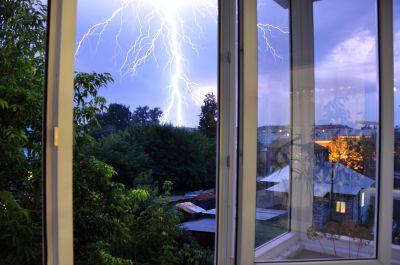Leading Storm Restoration Supplies For Faster Recovery
Identify essential equipment and materials that streamline the process of repairing storm-affected structures.
 Storm restorations are critical processes that help restore safety, functionality, and integrity to properties affected by severe weather events. From heavy rain and hail to strong winds and fallen debris, a variety of products are essential for effective storm damage repair. These products not only assist in immediate temporary fixes but also support long-term restoration efforts, ensuring structures are resilient and protected against future weather challenges.
Storm restorations are critical processes that help restore safety, functionality, and integrity to properties affected by severe weather events. From heavy rain and hail to strong winds and fallen debris, a variety of products are essential for effective storm damage repair. These products not only assist in immediate temporary fixes but also support long-term restoration efforts, ensuring structures are resilient and protected against future weather challenges.
Top Overall Option
Heavy-Duty Weatherproof Tarps
Heavy-duty weatherproof tarps are versatile and essential in storm restoration efforts. They provide immediate protection against rain, wind, and debris, helping to prevent further damage to roofs, windows, and exposed structures. Made from durable, waterproof materials, these tarps are designed to withstand harsh conditions and can be easily secured over damaged areas for temporary coverage. Their flexibility and strength make them a reliable choice for both emergency repairs and ongoing restoration projects.
Types of Products For Storm Restorations
Roof Repair Patches
Reinforced patches designed to seal roof damage quickly and effectively.
Storm Shutters
Protective coverings that secure windows against flying debris and high winds.
Water Extraction Equipment
Tools used to remove excess water from flooded interiors and prevent mold growth.
Sealants and Adhesives
High-strength sealants for sealing cracks and gaps in damaged structures.
Reinforced Repair Tape
Heavy-duty tape for temporary fixes on damaged surfaces and joints.
Temporary Roofing Materials
Materials such as roofing membranes and underlayments for quick roof coverage.
Debris Removal Tools
Shovels, rakes, and blowers for clearing fallen branches and debris.
Power Nailers and Staplers
Power tools that facilitate fast and secure attachment of repair materials.
Safety Gear
Gloves, goggles, helmets, and respirators to ensure worker safety during repairs.
Mold Prevention Solutions
Products designed to inhibit mold growth after water intrusion.
Storm Windows
Additional window coverings that provide extra protection during storms.
Structural Support Beams
Reinforcement elements used to stabilize compromised structures.
Drainage and Sump Pumps
Equipment to manage water accumulation and prevent flooding.
Insulation Repair Materials
Materials for restoring insulation damaged by water or wind.
Gutter and Downspout Extenders
Products to improve drainage and prevent water pooling around foundations.
Temporary Fencing and Barriers
Safety barriers to secure damaged sites and restrict access.
Fire Retardant Sprays
Treatments to reduce fire risk in storm-damaged areas.
Lighting and Power Generators
Portable power sources for work sites with power outages.
Popular Choices
Widely used for quick coverage of damaged roofs and windows.
Commonly installed to protect vulnerable windows during storms.
Popular for removing water from flooded areas efficiently.
Frequently used for sealing cracks and gaps in damaged structures.
A go-to for temporary repairs on various surfaces.
Essential for working safely in low-light conditions.
Standard protective gear for storm restoration crews.
Commonly used for clearing outdoor debris after storms.
Popular for quick and secure fastening during repairs.
Used to prevent water intrusion in vulnerable areas.
Frequently applied after water damage to inhibit mold growth.
Popular for preventing debris buildup post-storm.
Commonly used to manage water runoff and flooding.
Widely used for restoring insulation in damaged walls and attics.
Often installed to secure damaged property sites.
Popular for providing power during outages.
Essential for nighttime or low-light restoration work.
Chosen for reducing fire hazards in storm-damaged areas.
When undertaking storm restoration projects, it is important to select the right tools and materials. Durable tarps, heavy-duty sealants, and reinforced repair patches are often used to cover damaged roofs and walls quickly. Power tools such as pneumatic nailers and cordless drills facilitate efficient repairs, while safety equipment like gloves, goggles, and respirators are vital for protecting workers during the restoration process.
In addition to repair materials, specialized products like water extraction equipment, mold prevention solutions, and storm shutters contribute significantly to comprehensive restoration. Properly choosing and using these products can help mitigate secondary damage caused by leaks, mold growth, or further weather exposure. Whether working on residential or commercial properties, a well-rounded selection of storm restoration products ensures that repairs are thorough, durable, and compliant with safety standards.
Given the variety of products available, it is advisable to consider factors such as material quality, ease of use, compatibility with existing structures, and overall durability when selecting storm restoration supplies. Proper planning and the right product choices can make the restoration process more efficient and effective, helping property owners and contractors restore properties to their pre-storm condition with confidence.
Key Buying Considerations
- Material durability and weather resistance to withstand harsh conditions.
- Ease of installation and removal for quick response times.
- Compatibility with existing structures and repair methods.
- Size and coverage area to match specific damage needs.
- Weight and portability for ease of transport and handling.
- Safety features and certifications for worker protection.
- Resistance to UV rays and fading for long-term use.
- Cost-effectiveness balanced with quality and durability.
- Availability of replacement parts or accessories.
- Brand reputation and customer reviews for reliability.
- Compatibility with other restoration tools and materials.
- Environmental resistance, such as mold and mildew resistance.
- Flexibility and adaptability for different types of damage.
- Storage requirements and ease of transport.
- Warranty or guarantee offered by the manufacturer.
